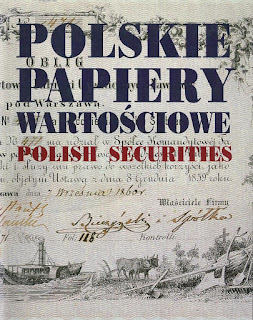2011 was the year of the The Smurfs. This movie brings the blue creatures created by the Belgian cartoonist Peyo alive into a 3D experience. Papa Smurf, Gutsy Smurf, Smurfette, Brainy Smurf, Clumsy Smurf and the others experienced a crazy adventure in New York City.
 |
| Scripophily Smurf was too busy to play a role in the movie. |
In 2011 scripophily collectors had something to say online
More scripophily related blogs turn up and there is a good reason for it. People like to tell their story about some research done or an interesting find. In some cases, they enjoy making the news, in this case the scripophily news. Blogging is an excellent way to do this and the tools supporting the blogger can quickly be mastered. Admit it, there is a lot to write about Scripophily.
New blogs noticed :
Some of these blogs are not in English but with the help of Google Translation the fun isn't spoiled.
Google Analytics is another web tool that helps you analyse the web traffic on your blog.
4792 absolute unique visitors were visiting this blog in the period 1 Jan 2011 - 19 Dec 2011 :
roughly 60 to 220 per week.
Double-click to enlarge
Scripophily on Twitter : a gently but firmly participation
Initially some dealers started using Twitter to announce new entries in their stocks. More and more non commercial information is broadcasted through the Twitter channel as well. Twittering, posting short Twitter messages or tweets, is as easy as pie. Here is a small tip for the twittering collector : add the number sign or hash (#) to your key words in order to let others easily find your tweets. An example : #scripophily.
Returning visitors to this blog make out 30%.
This comes down to about 1400 returning visitors in 2011.
This doesn't mean all of the visitors are collectors.
What about social media platforms ?
Well, LinkedIn, the social media platform for professionals, has a Scripophily group since 2008. It counts more than 50 members from all over the world. It's first discussion was posted in 2008 but overall activity still remains modest in contrast to the Scripophily groups on Facebook. If you have a LinkedIn account, log in and apply for your membership.
Yes, there is more than one scripophily related Facebook group. Initially these groups generated hardly any activity at all. This has changed this year. Notable groups are :
Newcomer Google+ looks promising but the platform is still too young, so it has not been picked up yet by scripophily enthousiasts.
The German collectors club EDHAC has a Sammlerforum (in German), see here. The forum is conceived as a classic online billboard. Set up in August 2010 the forum is bursting with activity. Well done EDHAC !
Yes, there is more than one scripophily related Facebook group. Initially these groups generated hardly any activity at all. This has changed this year. Notable groups are :
- Facebook's Scripophily Group
- Facebook's Osmanli Hisse Senetleri - Ottoman Shares & Bonds (Turkish)
Newcomer Google+ looks promising but the platform is still too young, so it has not been picked up yet by scripophily enthousiasts.
The German collectors club EDHAC has a Sammlerforum (in German), see here. The forum is conceived as a classic online billboard. Set up in August 2010 the forum is bursting with activity. Well done EDHAC !
About 63% (down 7%) of this blog's visits come from Western Europe and Northern America.
The new number 3 is South-Eastern Asia overtaking Northern Europe (2010 report see here).
Double-click to enlarge
Scripophily on YouTube ?
People can add comments to your YouTube video or link to it from their sites. Yes there is Scripophily on YouTube, however the activity can be compared with that of the LinkedIn group: very, very modest. Currently searching on the keyword scripophily yields about 30 video results. As video is one of the most powerful ways to bring your message, I find this an astonishing low number.
Locations visiting this blog in the period 1 Jan 2011 - 19 Dec 2011
By staying in touch online, one can connect in the real world.
Ofcourse nothing replaces the real thing of attending a bourse, strolling through a flea market or sharing some thoughts on a share certificate with someone else. But participating in these online channels makes us, collectors, less isolated than we used to be in the past. Scripophily is awaiting a bright future.
By alle means, thank you for the many visits and for the occasional comments which is great feedback to me about my blog posts.
By alle means, thank you for the many visits and for the occasional comments which is great feedback to me about my blog posts.
Merry Christmas and best wishes for the New Year !
F.L.













































